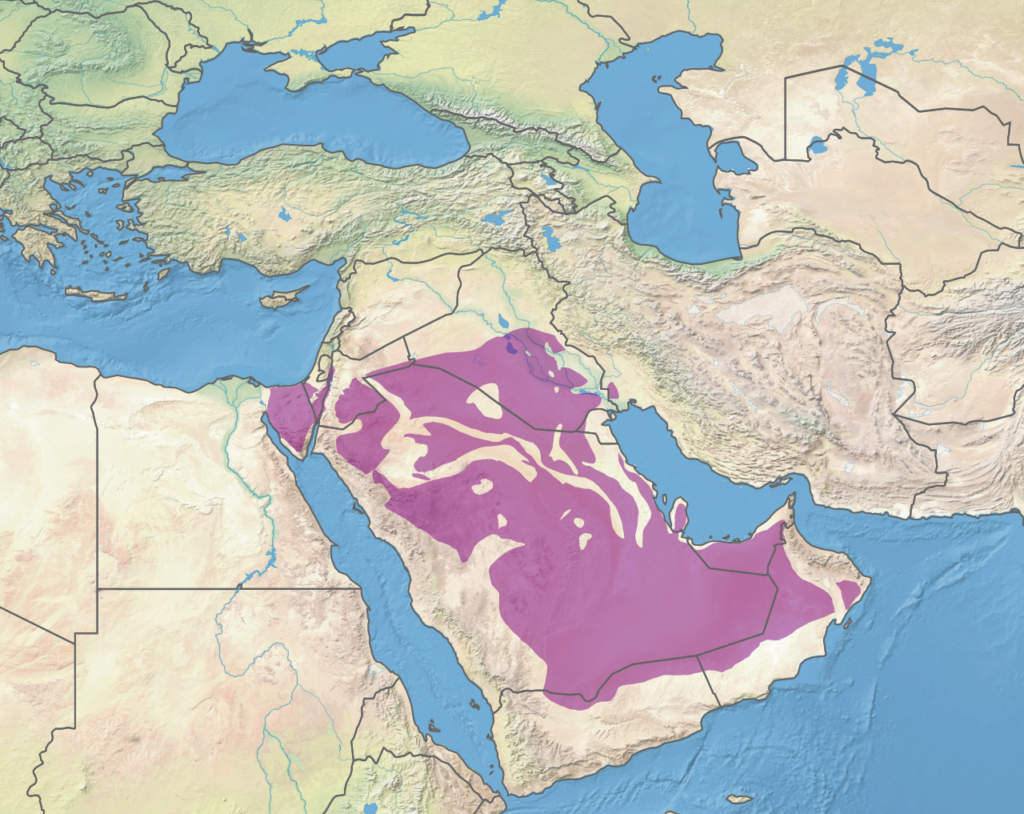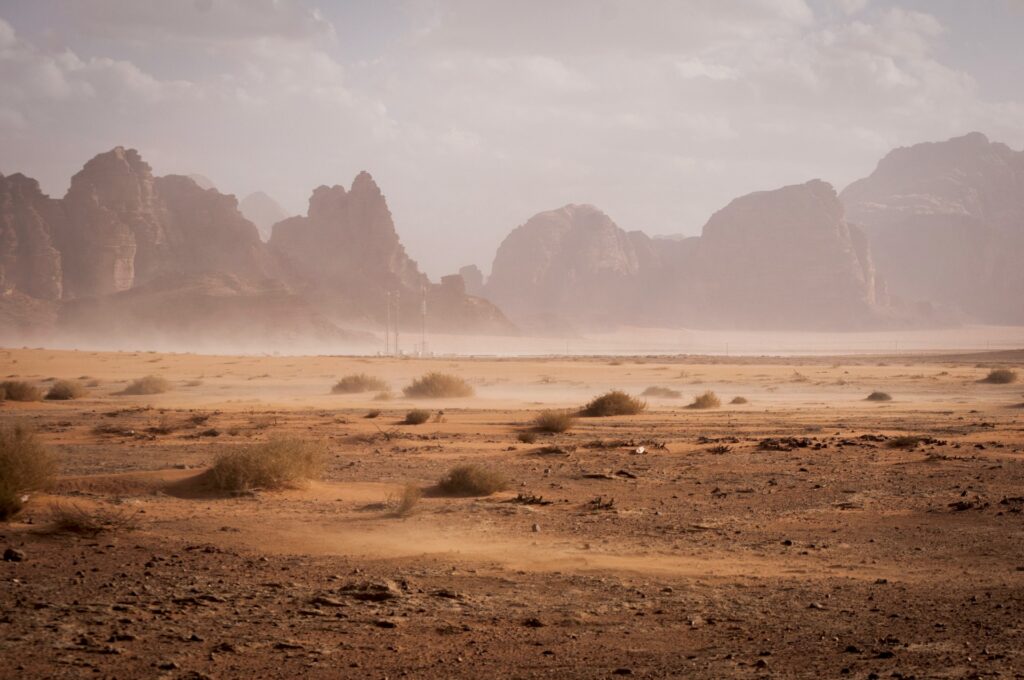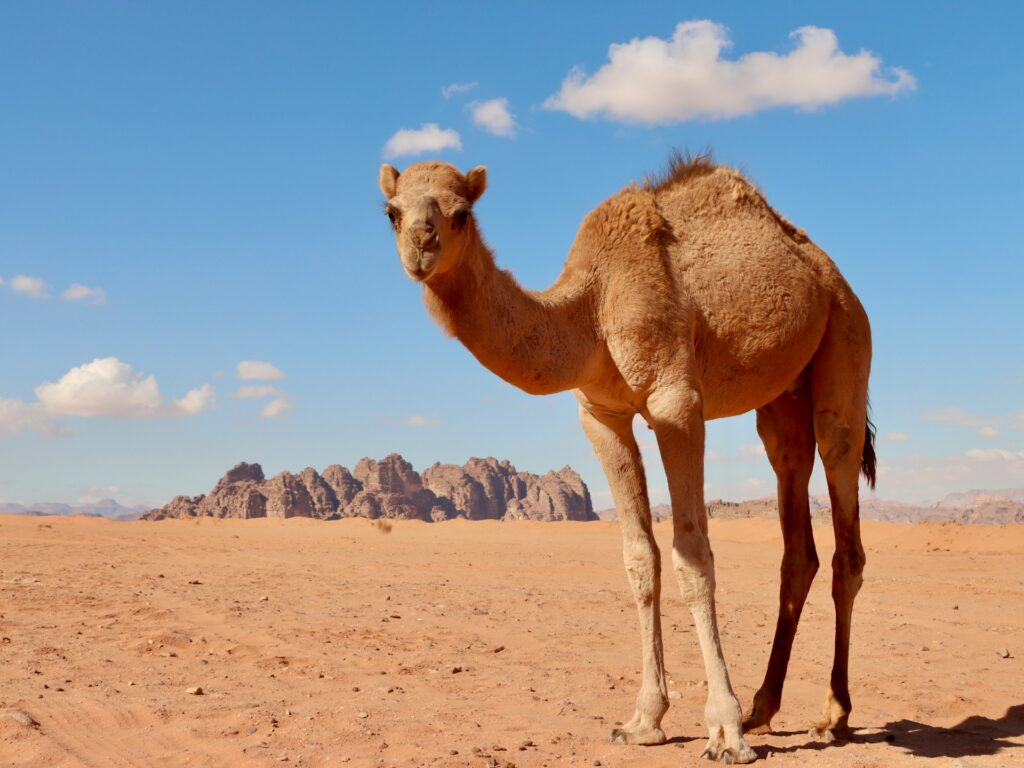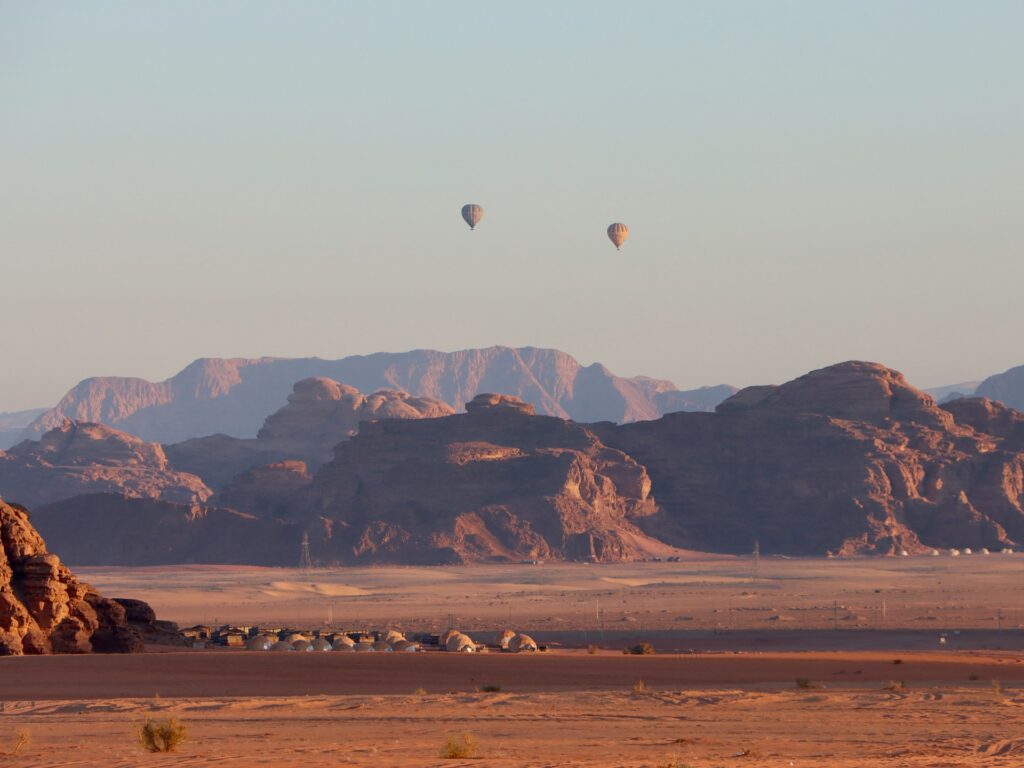The Arabian Desert, encompassing a vast swathe of the Arabian Peninsula, is a land of stark beauty and captivating mystery. This immense arid region, roughly the size of Western Europe, stretches across parts of Saudi Arabia, Yemen, Oman, the United Arab Emirates, Qatar, Kuwait, Iraq, and Jordan. Towering sand dunes sculpted by relentless winds, vast gravel plains, and occasional mountain ranges paint a breathtaking yet unforgiving landscape.
The Arabian Desert boasts a rich and fascinating history, serving as a crossroads for trade routes, empires, and cultures for millennia. From the nomadic Bedouin tribes who have adapted their lives to the harsh desert environment to the rise and fall of powerful empires, the Arabian Desert has been a stage for human drama for centuries. Its strategic location and natural resources have made it a coveted region, leaving behind a legacy of ancient settlements, trade routes, and cultural traditions.
Beyond the human story, the Arabian Desert is a realm teeming with unique life forms. Animals specially adapted to survive the scorching sun, scarce water, and limited food sources have carved out a niche in this challenging environment. From majestic oryx with their sweeping horns to elusive sand cats and resilient desert foxes, the Arabian Desert showcases the remarkable diversity of life on Earth.
Geography
The Arabian Desert’s vastness is staggering. Encompassing roughly 2.3 million square kilometers (900,000 sq mi), it’s the largest desert in Asia and the fifth largest in the world. This immense arid region stretches from the shores of the Red Sea in the west to the Persian Gulf in the east, encompassing a diverse yet unforgiving landscape.

Sand Seas and Gravel Plains: The most iconic feature of the Arabian Desert is undoubtedly its vast sand seas. The Empty Quarter (Rub’ al Khali) in southern Saudi Arabia is the world’s largest contiguous sand desert, a seemingly endless sea of rolling dunes reaching heights of up to 300 meters (984 ft). These wind-sculpted dunes shift and change shape over time, creating a mesmerizing and ever-evolving landscape.
Beyond the sand seas lie vast stretches of gravel plains, known as hamadas. These barren landscapes, formed by the erosion of ancient mountains, are covered in loose pebbles and gravel. Occasionally, these plains are punctuated by rocky outcrops, jebels, which provide dramatic relief and offer shelter for desert wildlife.
Mountain Ranges and Wadis: While sand and gravel dominate the landscape, the Arabian Desert also boasts several mountain ranges. The rugged Al-Ḥajar Mountains in Oman rise over 3,000 meters (9,842 ft) and provide a habitat for unique flora and fauna. The dramatic backdrop of the Hijaz Mountains graces western Saudi Arabia, bordering the Red Sea coast.
Scour the desert landscape and you might also encounter wadis, dry riverbeds that come alive after rare rainfalls. These ephemeral waterways can transform the desert floor into a temporary haven of greenery, showcasing the desert’s hidden potential for life.
Climate
The Arabian Desert’s climate is characterized by extremes. Scorching sun, high temperatures, scarce rainfall, and relentless winds define this arid region. Summer temperatures routinely soar above 40°C (104°F), with some areas even reaching a scorching 50°C (122°F). Winters are mild by comparison, with average highs around 20°C (68°F). Rainfall is scarce and erratic, with most areas receiving less than 100 millimeters (3.9 inches) of rain annually.
However, this harsh climate is not entirely static. Seasonal variations can bring dramatic shifts. Spring (March-May) can witness occasional dust storms and sandstorms whipped up by strong winds. Autumn (September-November) offers pleasant temperatures, making it a popular time for exploration.

The lack of rainfall and intense sunshine contribute to a phenomenon known as high evapotranspiration. This means that any moisture that falls on the desert surface evaporates quickly, leaving the land parched and arid.
Despite the harshness, the desert climate also plays a vital role in shaping the landscape. Relentless winds erode rock formations, sculpting the dramatic jebels and shaping the ever-shifting sand dunes. The occasional flash floods, though unpredictable, can carve temporary channels through the desert floor, revealing hidden beauty and depositing fertile sediments that sustain desert life.
Understanding the Arabian Desert’s climate is key to appreciating its unique ecosystem and the remarkable adaptations of the plants and animals that call it home.
Animals of the Arabian Desert
The Arabian Desert’s harsh climate and limited resources might seem like an impossible habitat for most animals. Yet, this arid region boasts a surprising diversity of life forms, each with remarkable adaptations to survive the scorching sun, scarce water, and limited food sources. These desert specialists have evolved unique strategies for conserving water, regulating body temperature, and finding sustenance in a seemingly barren landscape.
Creatures of the Night: The intense daytime heat forces many desert animals to adopt a nocturnal lifestyle. Emerging under the cloak of darkness, these creatures avoid the sun’s peak intensity and conserve precious water resources. Fennec foxes with their oversized ears radiate heat efficiently, while owls with exceptional night vision hunt for prey under the starry desert sky. Jerboas, hopping rodents with long hind legs, burrow underground during the day and emerge at night to forage for seeds and insects.

Water Conservation Champions: Water is perhaps the most precious commodity in the desert. Desert animals have honed their water-saving techniques to an impressive degree. Sand cats extract moisture from their prey, eliminating the need for free-standing water. Oryxes, majestic antelope with long, sweeping horns, can survive for extended periods without drinking by relying on the moisture they obtain from desert plants. Reptiles like snakes and lizards are covered in scales that minimize water loss through their skin. Camels, often regarded as “ships of the desert,” are famous for their ability to store fat in their humps for energy, not water, and can efficiently store water in their specialized stomachs.
Masters of Camouflage: In an environment where food and water are scarce, staying hidden from predators is crucial. Many desert animals have mastered the art of camouflage, blending seamlessly into the sandy landscape. Sandgrouse, desert birds with powerful beaks, have plumage that perfectly matches the color of the sand. Horned vipers, with their flattened bodies and sandy coloration, lie buried in wait for unsuspecting prey. Fennec foxes and desert hares use their fur coloration to blend into the desert backdrop, providing a crucial advantage in the constant struggle for survival.
The animal life of the Arabian Desert is a testament to the power of evolution and the remarkable resilience of nature. By understanding the unique adaptations of these desert specialists, we gain a deeper appreciation for the delicate ecological balance that sustains life in this arid region.
Human History of the Arabian Desert
The vast expanse of the Arabian Desert has served as a backdrop for human history for millennia. From the earliest nomadic wanderers to the rise and fall of empires, the ingenuity and resilience of human communities have left an indelible mark on this unforgiving landscape.
Early Nomads and the Enduring Bedouin Culture: The Arabian Desert’s harshness has fostered a unique way of life for nomadic communities. For thousands of years, the Bedouin people have roamed the desert, herding camels, goats, and sheep, and following seasonal patterns of rainfall and vegetation growth. Their deep understanding of the desert environment and their mastery of survival skills allowed them to thrive in a land where others might perish.
The Bedouin culture is rich in tradition, with a strong emphasis on hospitality, honor, and tribal loyalty. Their poetry and storytelling traditions have been passed down through generations, capturing the beauty and challenges of desert life. While some Bedouin communities have adopted more modern lifestyles, their legacy continues to shape the cultural identity of the Arabian Desert.

Trade Routes and the Rise of Empires: The Arabian Desert’s strategic location at the crossroads of three continents – Africa, Asia, and Europe – made it a vital link in ancient trade routes. Frankincense, spices, and other valuable commodities passed through the desert, enriching desert communities and fostering the rise of powerful kingdoms.
The Nabataean Empire, flourishing from around the 3rd century BC to the 2nd century AD, is a prime example. These skilled engineers and traders carved a network of caravan routes through the desert, establishing Petra, the “Rose Red City,” as a major trading hub. Their sophisticated water harvesting techniques allowed them to not only survive but also prosper in the harsh desert environment.
The rise of Islam in the 7th century AD further shaped the human story of the Arabian Desert. Prophet Muhammad, born in Mecca, united warring tribes under the banner of Islam, laying the foundation for the powerful Arab Caliphates. These empires stretched from the Arabian Peninsula across North Africa and into parts of Europe and Asia, leaving behind a legacy of art, architecture, and scholarship that continues to resonate today.
The Modern Era and a Changing Landscape: The discovery of oil in the 20th century dramatically transformed the Arabian Desert. The vast oil reserves spurred economic development and modernization in many desert nations. Modern cities rose from the sands, and traditional nomadic lifestyles began to give way to a more urbanized society.
Despite these changes, the Arabian Desert’s rich human history continues to influence the region. Ancient trade routes are now traversed by modern highways, and archeological discoveries continue to shed light on the lives of those who inhabited the desert in centuries past. The enduring spirit of the Bedouin people and the legacy of powerful empires are woven into the fabric of the Arabian Desert, reminding us of the enduring connection between humans and this captivating yet challenging environment.
Is Wadi Rum in the Arabian Desert?
Yes, Wadi Rum is located within the Arabian Desert. This stunning desert valley is located in the southern region of Jordan, bordering Saudi Arabia, on the western edge of the Arabian Desert.
The dramatic sandstone cliffs, vast stretches of red sand, and towering rock formations of Wadi Rum are iconic features of the Arabian Desert landscape. This UNESCO World Heritage Site boasts a rich history, with evidence of human settlement dating back over 12,000 years. The Nabataeans, the same civilization that carved the famed city of Petra, left their mark on Wadi Rum as well. Their Thamudic inscriptions and petroglyphs adorn the desert cliffs, offering a glimpse into their lives and culture.
See Wadi Rum, a desert tour operator, can guide you through this awe-inspiring landscape. Whether you’re interested in a thrilling 4×4 jeep tour, a gentle camel ride, or an overnight stay under the starry desert sky, See Wadi Rum has the perfect adventure for you. Our experienced guides will not only show you the breathtaking beauty of Wadi Rum but also share their knowledge of the desert’s unique geology, history, and culture.
So, if you’re looking to experience the magic of the Arabian Desert, look no further than Wadi Rum!
